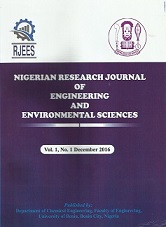The Rheology and Microstructural Properties of Gum Arabic Concrete
Authors: *Adetiloye, A., Akinyele, J.O. And Babafemi, A.J.
DOI Info: http://doi.org/10.5281/zenodo.15778191
ABSTRACT
Environmental sustainability has created challenges which has led to innovative and cheap commercially viable construction in civil engineering. Admixture which are chemicals used in modifying or improve the properties of concrete are typically synthetic in nature and are expensive. This chemical is leached into the environment during construction or after demolition causing pollution hence natural admixture which are inexpensive like polysaccharides are being researched into. Gum Arabic is a natural polysaccharide and this paper investigates the impact of Gum Arabic as a viscous modifying agent and natural admixture in both fresh and hardened concrete. The slump and rheology of the fresh concrete were examined, with the results analyzed using Bingham’s model. The microstructural properties of the hardened concrete were studied using Scanning Electron Microscopy (SEM) and Energy Dispersive X-ray Spectroscopy. The gum Arabic was introduced in proportions of 0.2%, 0.4%, 0.6%, 0.8%, and 1% and as the percentage of gum Arabic increased, both the yield stress and viscosity of the concrete also increased. A stress-strain graph of the fresh concrete was plotted and detailed microstructural analyses revealed a denser concrete at the recommended dosage of 0.8% with an increased presence of Na, Mg, Al, Si, K, P, Ca, Ti, and Fe. Generally, between 0.6% - 0.8% the concrete shows a homogeneous material in which all voids were fill and this led to better performance.
Affiliations: Federal University of Agriculture Abeokuta, Nigeria.
Keywords: Gum Arabic, Cement, Concrete, Rheology, Nano Porosity
Published date: 2025/06/30









